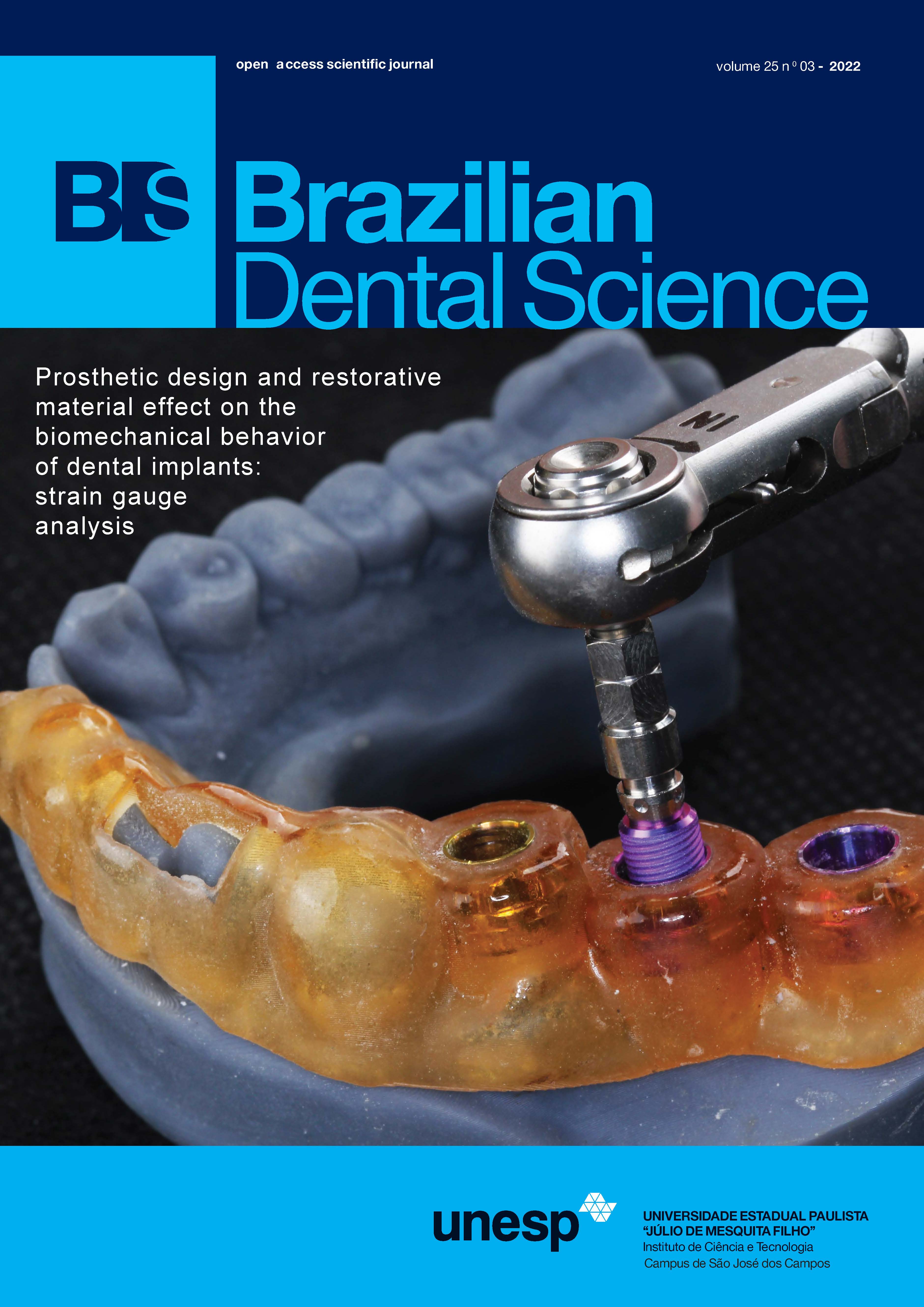Prosthesis and implant survival in immediately loaded full arch restorations using fiber-reinforced versus non-reinforced temporary frameworks: a randomized clinical trial
DOI:
https://doi.org/10.4322/bds.2022.e3251Abstract
Objective: To evaluate and compare prosthesis and implant survival in case of interim fixed complete dentures
reinforced with fiber resin frameworks versus those that were not reinforced with any framework in case of
immediately loaded full arch restorations in completely edentulous patients. Material and Methods: Thirty
completely edentulous patients were randomly allocated into two parallel arm groups. Non-reinforced control
group in which patients received non-reinforced all-on-four immediately loaded fixed complete denture and
Fiber reinforced group in which patients received all-on-four fixed complete denture supported with glass-fiber
reinforced resin framework. Prosthesis and implant survival were clinically evaluated after 4 months follow up
period. Results: A statistically significant difference for prosthesis (p=0.032) and implant survival (p= 0.031)
was found between both groups. The fiber-reinforced group showed 100% prosthesis survival and 95% implant
survival. On the other hand, the non-reinforced group showed 73.3% prosthesis survival and 81.1% implant
survival. Conclusion: Based on the findings of this study, it can be concluded that strengthening the fixed full
arch restorations with fiber reinforced frameworks can help overcoming the problem of interim prosthesis fracture
during the osseointegration period when used for immediate loading in completely edentulous patients. It can
also improve the survival of the immediately loaded implants.
KEYWORDS
Dental implants; Dental prosthesis; Implant-supported; Prosthesis survival.
Downloads
Downloads
Published
Versions
- 2022-09-22 (2)
- 2022-06-21 (1)
How to Cite
Issue
Section
License
Brazilian Dental Science uses the Creative Commons (CC-BY 4.0) license, thus preserving the integrity of articles in an open access environment. The journal allows the author to retain publishing rights without restrictions.
=================




























